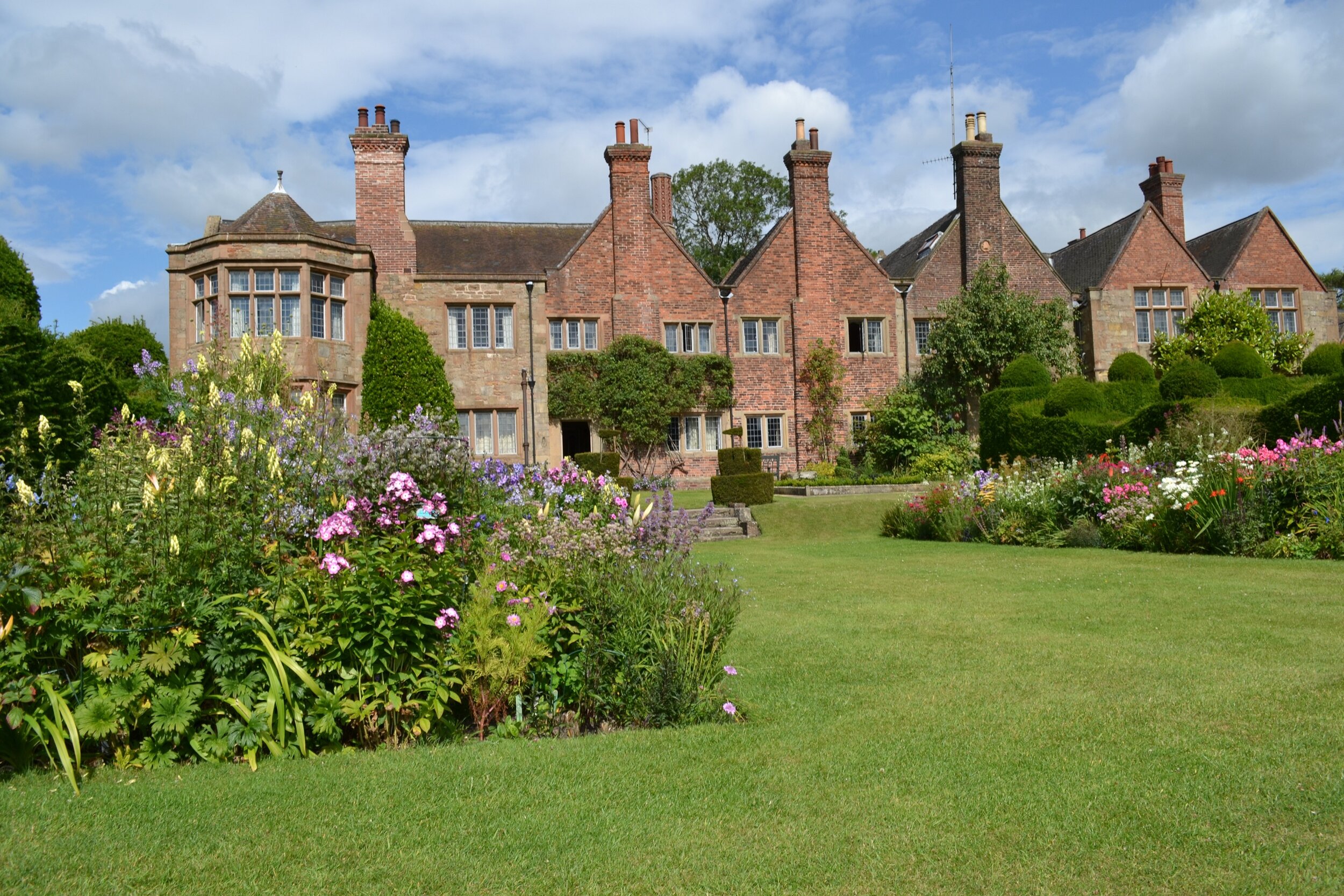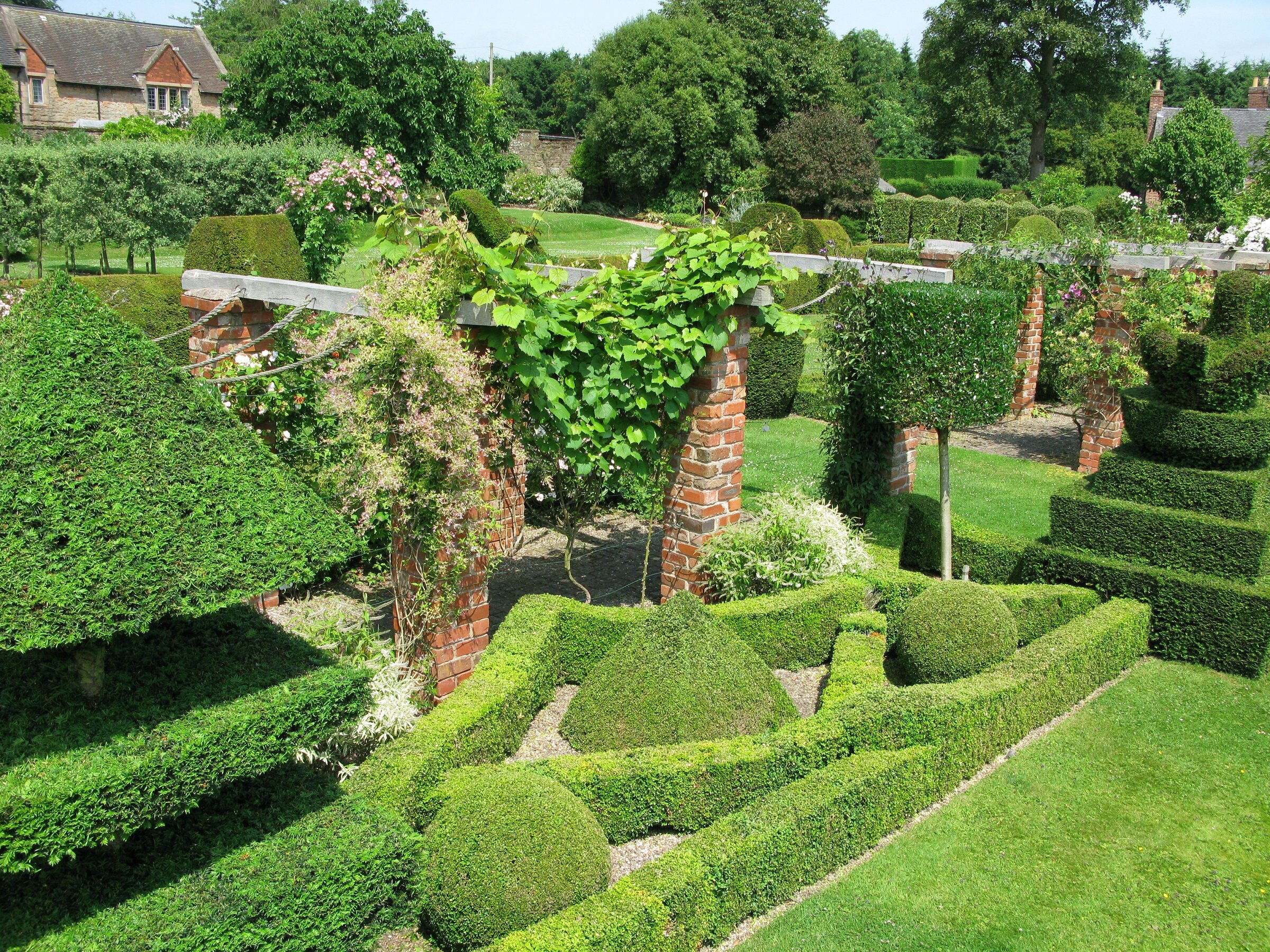
History of Felley Priory
The Priory of Felley was founded in 1156 on the site of a small hermitage dedicated to Our Lady. It consisted of twelve canons following the Rule of St Augustine. They lived well organised lives, with a stew pond, still visible over the bottom garden wall, for the carp they ate on Fridays and a mill at the bottom of the hill.
In the Dissolution in 1535, not all of the Priory was completely destroyed. Parts were used elsewhere in the construction of the house and garden, for example, on the west side of the house between the Tudor door and chimney. The pillars at the entrance to the garden were originally part of the Priory Church and date from the late 12th Century.
The brick side of the house, next to the Jargonelle Pear Tree, dates from 1557, but it is thought that originally the Cloisters were within this area. The rest of the Priory was located towards the west end of the house. The garden now covers the site of the Priory Church. The high garden wall to the south west is believed to be part of the priory boundary wall.
The central part of the house was constructed in the 16th and 17th centuries. There is a particularly fine example of a Tudor chimney on the west side of the house. The lion and unicorn on the west side of the house date from this period.
The house was plundered during the Civil War and became an army garrison and Royalist stronghold.
The stone ends of the house were added about 1860 and the garden terraced in 1890. The pond in the garden may have been constructed then.
The Chaworth-Musters family became owners of the property in 1822, although they did not live there.
In 1973, Major Robert Chaworth-Musters moved to Felley, having sold Annesley Hall, the family home, which is just the other side of the M1. The gardens were created thereafter by Major and Mrs Chaworth-Musters.
The house is currently occupied by Major Chaworth-Musters’ grandchildren, Sophia and Victoria, together with their father and step-mother.

The Chaworth Family
12th Century – Patricius Chaworth arrived from France and settled in Wiverton, in the Vale of Belvoir
1440 – George Chaworth married the heiress Alice Annesley who brought with her the estate of Annesley, where her family had lived for 300 years
1628 – George Chaworth was raised to the peerage by Charles I as Viscount Chaworth
1765 – William, Viscount Chaworth, was killed in a duel in London after an argument with his cousin and neighbour Lord Byron (great uncle of the poet)
1805 – Mary Ann Chaworth, heiress of Annesley, married John Musters of Colwick Hall, near Nottingham, creating the name Chaworth – Musters
1831 – While the annual Goose Fair was taking place in Nottingham a messenger galloped in with the news that the Second Reform Bill had been thrown out of Parliament, and the already excited crowd had to be dispersed by the Militia. The next day the crowd reformed, burned down Nottingham Castle and proceeded to sack Colwick Hall. Mrs Chaworth Musters, with her daughter Sophia, soaking wet in the pouring rain, crouched all night in terror in the shrubbery while the house was looted and set on fire. She died at Wiverton a few months later from the shock
1832 – Following these events the Chaworth Musters family mainly lived at Annesley Hall
1973 – Major Robert Patricius Chaworth Musters, who served in the Coldstream Guards, sold the Hall and moved to Felley Priory, which his family had owned since 1822
1974 – He married Maria Monckton, daughter of the 8th Viscount Galway of Serlby Hall in North Nottinghamshire and together they started creating the garden as it is today
2010 – Maria Chaworth-Musters dies and Major Chaworth-Musters’ grandchildren, Sophia and Victoria, along with their father and step-mother, move into Felley Priory

